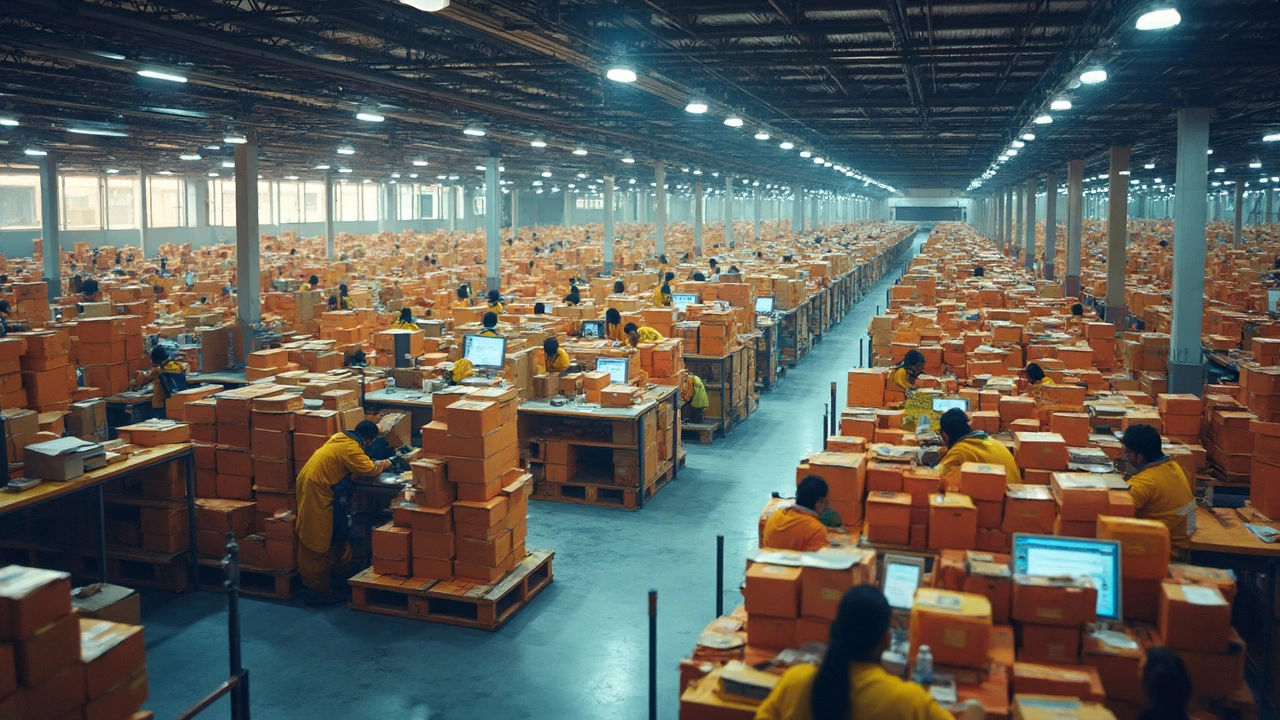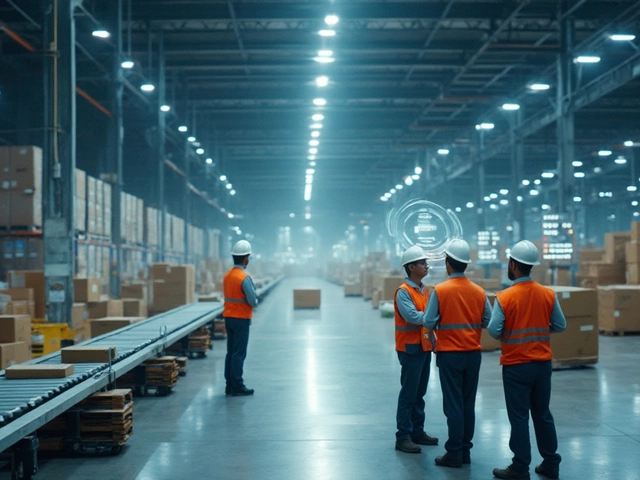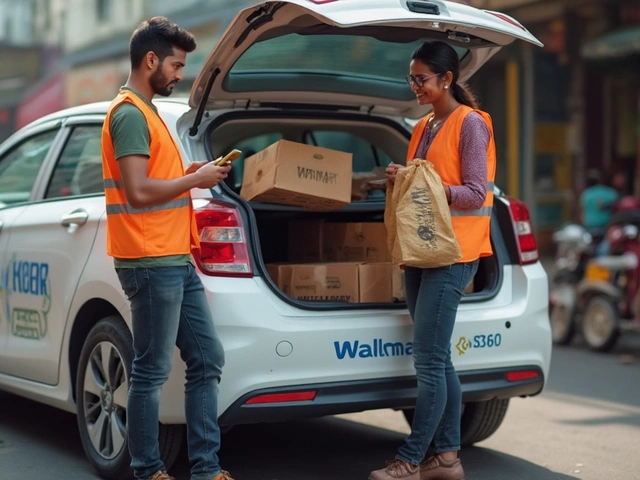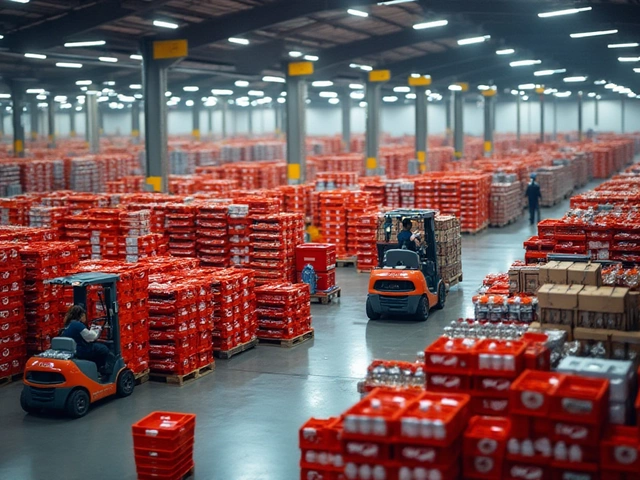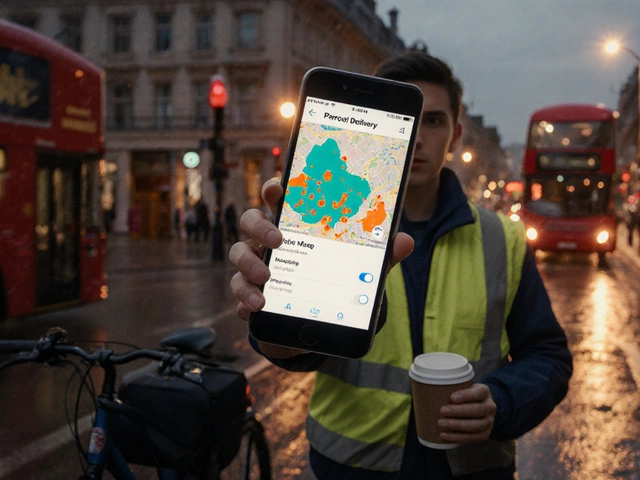Ever wondered what goes on after you tap that buy button? Your purchase sets off a chain reaction that mixes people, machines, and software, all hustling to get your order where it needs to be—and fast. Logistics isn’t just about trucks and tracking numbers. It’s about making sure stuff doesn’t get lost, delayed, or damaged along the way.
If you run an online store (or dream of starting one), getting logistics right isn’t just a nice-to-have. It’s everything. Mess it up, and you risk losing customers for good. Nail it, and people come back because they trust you with their time and money. Here’s the inside scoop on how successful shops keep the engine running behind the scenes.
- What Happens After You Click Buy
- Warehousing and Inventory Management
- The Delivery Journey Explained
- Tips for Smoother Logistics
What Happens After You Click Buy
Once you hit that buy button, a lot kicks into gear—faster than you might think. Your order jumps into the retailer’s system, triggering a process that starts with a digital order confirmation and ends with a package at your doorstep. This whole journey revolves around solid e-commerce logistics and carefully planned steps.
Here’s what actually happens, step by step:
- Order Processing: Your details (like item, address, and payment) get sent to a big computer system, often called an OMS (Order Management System). This system checks if your stuff is in stock and confirms your payment.
- Picking and Packing: The warehouse gets notified. Workers or robots head out to grab your selected item. The product is then packed, usually with materials meant to keep it safe and light for cheaper shipping.
- Shipping Label Creation: A digital shipping label is printed with your address and a tracking code. That tracking number is what lets you stalk your package in real time.
- Handover to Carrier: The packed box is picked up by a delivery partner like FedEx, UPS, or the local postal service. Sometimes, for small businesses, it’s even handed over to third-party logistics providers (3PLs) who batch shipments for better rates.
If you’re shopping from a bigger online store like Amazon, this process can happen in under two hours. Their warehouses are stocked based on algorithms that predict what’s going to sell and where, so they keep fast-moving goods much closer to customers.
Here’s a quick look at average processing speeds:
| Retailer Type | Average Order Processing Time |
|---|---|
| Big retailer (Amazon, Walmart) | 1-2 hours |
| Mid-sized store | 6-12 hours |
| Small shop | 12-48 hours |
Sometimes, if a product is out of stock or comes from a different supplier, you’ll get a split shipment. That means your stuff arrives in separate boxes. For business owners, the challenge is juggling these steps, making sure nothing slips through the cracks, and that every order gets moving fast. That’s modern supply chain in action—no magic, just really smart systems and lots of sweat behind the scenes.
Warehousing and Inventory Management
Behind every speedy delivery is a well-run warehouse. In e-commerce logistics, warehousing is all about storing products in a way that keeps them organized and easy to find. These places aren’t just big rooms filled with boxes—think of them as huge puzzles where every piece needs to be in its right spot, or things can go sideways fast.
Inventory management is how store owners track what’s in stock and when it’s time to restock. Run out of something? That’s a lost sale. Overshoot and overstock? You’re paying for shelf space you don’t need. Big names like Amazon and Walmart use real-time systems with barcodes or RFID tags to know exactly what’s on every shelf. In fact, research from Statista shows that 46% of e-commerce businesses consider real-time inventory tracking their number one tech investment.
Let’s look at the steps most e-commerce logistics setups follow for effective inventory:
- Receive and check new stock as soon as it arrives.
- Scan everything into the system so you know exactly what’s on hand.
- Use smart shelf labeling so pickers can find things quickly.
- Set up regular counts (called cycle counting) to avoid surprises.
- Automatically reorder top sellers when they get low.
Modern warehouses also use things like robots, conveyor belts, and automated picking devices. These tools speed things up and make fewer mistakes than people do, especially during big sales.
If you’re running a smaller online shop, you don’t need a huge fancy warehouse. But you do need a clear system. Even something as simple as labeled bins or a shared spreadsheet can help you avoid mixing up orders and shipping the wrong thing.
Here’s a quick peek at how warehouse tech and simple tricks make a difference for warehousing and inventory management:
| Method | Pro | Con |
|---|---|---|
| Manual counts | Cheap, simple | Time-consuming, easy to mess up |
| Spreadsheets | Flexible, accessible | Gets messy with more items |
| Barcode systems | Fast, accurate | Needs scanners and software |
| Automated robotics | Super fast, high accuracy | High setup cost |
Bottom line: If you want to keep customers happy, get your inventory sorted. Messy shelves mean late orders and unhappy reviews. Smooth systems mean less stress and more repeat buyers. That’s the heart of great e-commerce logistics.

The Delivery Journey Explained
The moment an order gets placed, the clock starts ticking. Every step in the delivery process matters—especially with shoppers these days expecting one- or two-day shipping on pretty much everything. Most e-commerce retailers rely on a mix of their own teams and outside partners to make it all work. So, how does your new gadget or pair of shoes actually get to your doorstep?
First, the order goes from the online system straight to a warehouse. Staff (or sometimes robots) scan the shelves, grab the item, and send it to packing. Here, it gets checked, boxed up, and labeled—accuracy is everything or else returns chew up profit fast. Fun fact: according to a 2023 ShipStation study, 73% of customers are unlikely to buy again after a late or bungled delivery. That’s huge.
Next up is the choice of shipping method. Many businesses offer standard, express, or even same-day delivery in big cities. They hand off the package to a last-mile courier—think UPS, FedEx, DHL, or local delivery startups. This last leg is where things can get tricky. Urban deliveries come with traffic and parking nightmares, while rural spots mean longer drives and fewer packages per route.
Here’s how a typical delivery journey breaks down:
- Order confirmation triggers warehouse processing
- Item is picked, packed, and labeled
- Parcel is handed off to a logistics carrier
- Delivery is tracked in real time, often using a tracking number
- Final handoff at door, locker, or drop-off point (sometimes with signature required)
Real-time updates aren’t just a nice touch—they’re a must. According to a 2024 Shopify survey, 94% of buyers want to track their package until arrival. If you aren’t offering tracking, you risk losing repeat business. As Amazon famously puts it:
"Our goal is to be Earth’s most customer-centric company, where customers can find and discover anything they might want to buy online, and endeavors to offer its customers the lowest possible prices."That starts with getting delivery right, every time.
Companies are constantly looking for ways to shave minutes and dollars off the process. Here’s a peek at standard timeframes in the US for various shipping options:
| Shipping Method | Average Time (Days) | Common Carriers |
|---|---|---|
| Standard | 3-7 | USPS, UPS, FedEx |
| Express | 1-3 | FedEx, UPS, DHL |
| Same-Day | 0-1 | Local Couriers, Amazon Flex |
Poor delivery can sink a brand, but fast, accurate shipping and smart logistics mean more repeat customers and fewer headaches. The takeaway? Nail your delivery process if you want to grow your e-commerce store.
Tips for Smoother Logistics
If you want your e-commerce logistics to run like clockwork, there are a few things you can do that actually make life easier—not just for you, but for your customers too. Getting the basics right can save you money, keep buyers happy, and cut down on those late-night headaches over missing parcels.
- Automate where you can. Modern warehouse software (like ShipBob or ShipStation) can automatically update inventory, label packages, and even send tracking numbers straight to the customer. This cuts down human errors and speeds things up.
- Choose smart partners. Not all shipping companies are created equal. Some are amazing with last-mile delivery; others are cheaper for bulk shipments. Mix and match—using more than one partner covers hiccups when one service is slow or down.
- Get ruthless about packaging. Use the smallest box that fits. Oversized packaging not only annoys customers—it racks up your shipping costs. According to a 2023 study by Shippo, right-sizing boxes reduced damages by 17% and shipping expenses by 22% on average.
- Keep shoppers in the loop. People love tracking info and updates. Set up automated emails so nobody needs to ask, “Where’s my stuff?” This step alone seriously boosts reviews and repeat business.
- Plan for returns. Easy returns mean more trust—some shoppers decide what to buy based on the return policy alone. A streamlined return process can be a secret weapon for loyalty.
Ever wondered what really slows things down? Here’s a quick look at common logistics snags:
| Problem | Fix |
|---|---|
| Running out of stock | Use inventory alerts and reorder reminders |
| Orders lost in transit | Pick a shipping partner with strong tracking tools |
| Slow order picking | Organize items logically in your warehouse and use barcodes |
You don’t have to overhaul everything at once—start with one or two e-commerce logistics upgrades and see the difference for yourself. Small tweaks, like sending better notifications or picking a smarter courier, can pay off pretty quick.
